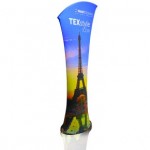If you’re planning to attend an international event or exhibition, then the company has probably spent a lot of money getting you there. This means that preparation is absolutely vital to make sure it’s a success and the business gains value from the experience. Just because you have a formula for success which works every time in your own country doesn’t mean it will instantly connect with an overseas audience. Here is some advice for your first international event.

That being said, it’s also a good idea to meet up with a local businessperson who could help you once you arrive. If you work for a global company which has offices in the right city, then it’s easy. Otherwise, use your connections and maybe even ask the event organisers if there is anyone who could show you around and give you some tips before the event.
You also need to consider the relevance of your display stand to the local region. If they speak another language than English, it might be a good idea to add a second language to your graphics to appeal to a wider audience. You should also think about the actual design and especially the colours used in the exhibition stand. Colours have different meanings in different cultures around the world. For example:
- Red – is a prominent colour in Asia, used in special occasions such as holidays and weddings. In Western countries red can be used to symbolise passion and love but also danger. In Russia red is associated with communism and in parts of Africa it portrays aggression and death. With so many confusing messages, perhaps you should avoid red when necessary.
- White – in the West white stands for peace and purity, but in some Asian countries it represents death, mourning and bad luck. Some people even wear white to funerals instead of black!
- Green – this colour gives a varied message, from all things natural to jealousy. In the East it can represent luck, wealth and fertility but it can also symbolise infidelity. In China, men don’t wear green hats as it means their wives have committed adultery!
Basically, you have to put a lot more preparation into an international event to allow for cultural differences.
